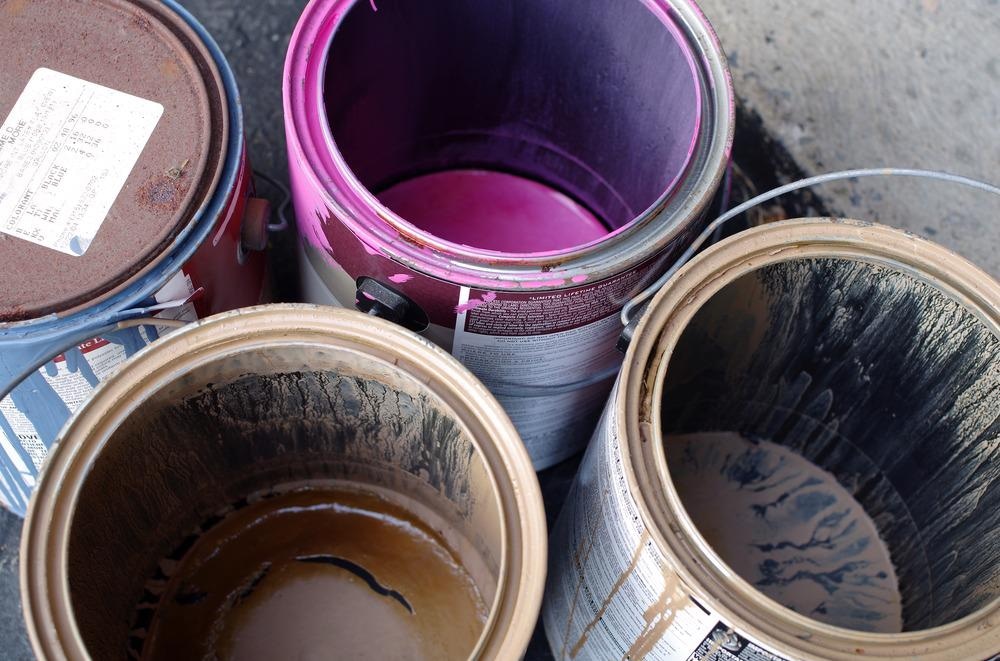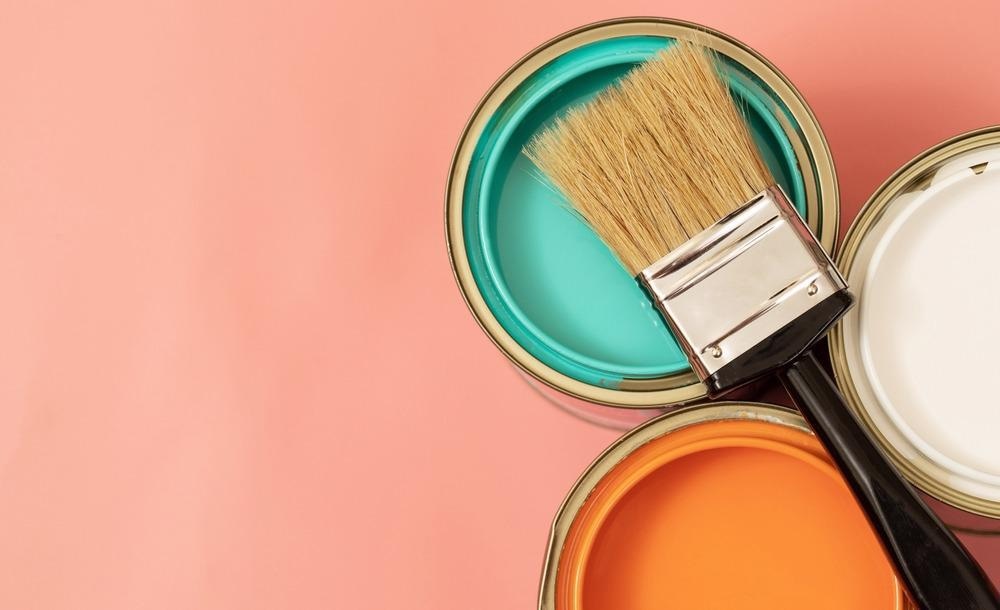Volatile organic compounds (VOCs) are organic chemicals that have a high vapor pressure at room temperature and are classified as toxic air pollutants; unfortunately, VOCs are commonly used in household paints.

Image Credit: IkeHayden/Shutterstock.com
What Are Volatile Organic Compounds (VOCs) And How Are They Harmful to Human Health?
Volatile organic compounds (VOCs) are responsible for producing photochemical ozone (O3), other oxidants, and secondary organic aerosols (SOAs).
Research has demonstrated the detrimental impact of O3 and SOAs on the environment and human health.
Studies have shown that exposure to VOCs can cause cancer, while others have revealed the harmful effect they have on numerous bodily systems and organs such as the central nervous system (CNS), respiratory system, and liver. VOC exposure has also been linked with symptoms such as breathing difficulties, headaches, and fatigue.
Therefore, it is essential that humans are protected from sources of VOCs in order to prevent the associated health risks.
VOCs Are Relied On to Give Paints Certain Properties
Lead paint was banned by the Consumer Product Safety Commission in 1977 because of its risk to human health.
Many recall the studies that linked childhood exposure to lead and the development of mental health disabilities.
Scientists highlighted that paint dust or paint chips in the home were a common form of exposure. Lead paint is not the only kind of paint that is bad for health, though.
More and more research is revealing that exposure to VOCs in home paints can also be detrimental to health.
VOCs are added to paints for several reasons.
Their primary role is to facilitate the transference of the paint from the can to the intended surface. VOCs in solvent-based paints have the impact of aiding the paints flow.
Additionally, some VOCs can also preserve the paint and prevent it from spoiling. Finally, the addition of some VOCs into paints can give the paint rust-preventing qualities.
Alternatives to VOC Paints
The U.S. Environmental Protection Agency (EPA) has identified poor indoor air quality, to which VOCs contribute, as one of the country’s top five leading health risks.
In recent years, research has made great steps forward, and an increasing number of alternative, low-VOC products are now on the market to replace the toxic, health-damaging high VOC products that we are used to.
Now, there are many safe alternatives to traditional paints that have low levels of VOCs or claim to have zero VOCs. Ceramic paints and organic paints are two of the most promising alternatives that are currently on the market.
Ceramic paint uses tiny ceramic beads as pigment extenders.
The beads are so small that they appear as a finely ground powder. These pigment extenders act as a filler in paint pigmentation.
Traditional options of organic extenders are flawed because they allow dirt to enter the paint. Because the ceramic beads are small and round, they are able to pack closely together to overcome this problem.

Image Credit: SHISANUPONG1986/Shutterstock.com
Additionally, ceramic paints have antimicrobial protection built in. Finally, and most importantly, ceramic paints have significantly fewer VOCs, making them safer than conventional paint options.
Organic paints are made from natural, organic products and often claim to either contain no VOCs or low levels, depending on the product.
They are mainly made from animal and plant products, as well as chalk, lime, milk casein, natural latex, beeswax, and minerals. Some brands have explored the use of other ingredients.
Anna Sova paints, for example, are made from 96% food ingredients, including bamboo cellulose, bactericides, fungicides, and food emulsifiers. Organic paints are considered to be non-toxic and safer than traditional paints.
These innovative alternatives are becoming increasingly popular as the dangers of VOCs become more understood.
One brand of organic paint, ECOS, has already been successful in being chosen to paint areas of the Louvre, Westminster Abbey, and the Getty Museum.
What Challenges Hinder the Widespread Adoption of Organic and Ceramic Paints?
While organic and ceramic paints have been proven to be high quality and can deliver a ‘finish’ comparable to that of traditional VOC paints, the public opinion of them does not always reflect this.
Organic and ceramic paints are relatively new to the market, and consumers are less aware of their quality.
Additionally, the danger of VOCs is not understood by all consumers, who fail to see the motivation behind choosing these alternative paints.
Additionally, organic and ceramic paints face some of the same challenges as traditional paints. For example, they use a lot of water, which is adding to the problem of water wastage.
Paint production is one of the world’s most water-intensive industries, an aspect that prevents even organic and ceramic paints from being environmentally friendly.
It is likely that continued research and development over the coming years will help progress organic and ceramic paint production so that it can overcome these obstacles.
Given the serious health implications of exposure to VOCs, it is possible that traditional VOC paints may at some point be banned, similar to how lead paint was taken off the market, and alternative VOC-free options will need to be ready to take over the market.
References and Further Reading:
Alford, K. L., & Kumar, N. (2021). Pulmonary Health Effects of Indoor Volatile Organic Compounds-A Meta-Analysis. International journal of environmental research and public health, 18(4), 1578. https://www.ncbi.nlm.nih.gov/pmc/articles/PMC7914726/
SOMA_Studiomilano. (2020). COLOR TRENDS | Sustainable Colours are the Colours of the Future [Online]. Italian Bark. Available at: https://www.italianbark.com/color-trends-sustainable-colours-future/ (Accessed on 30 September 2021)
Song, M.Y., Chun, H. (2021). Species and characteristics of volatile organic compounds emitted from an auto-repair painting workshop. Sci Rep 11, 16586. https://www.nature.com/articles/s41598-021-96163-4#citeas
Yessenia Funes. (2019). Childhood Lead Exposure May Increase Risk of Mental Illness, Study Suggests [Onine]. Gizmodo. Available at: https://gizmodo.com/childhood-lead-exposure-may-increase-risk-of-mental-ill-1831990838 (Accessed on 30 September 2021)
Disclaimer: The views expressed here are those of the author expressed in their private capacity and do not necessarily represent the views of AZoM.com Limited T/A AZoNetwork the owner and operator of this website. This disclaimer forms part of the Terms and conditions of use of this website.